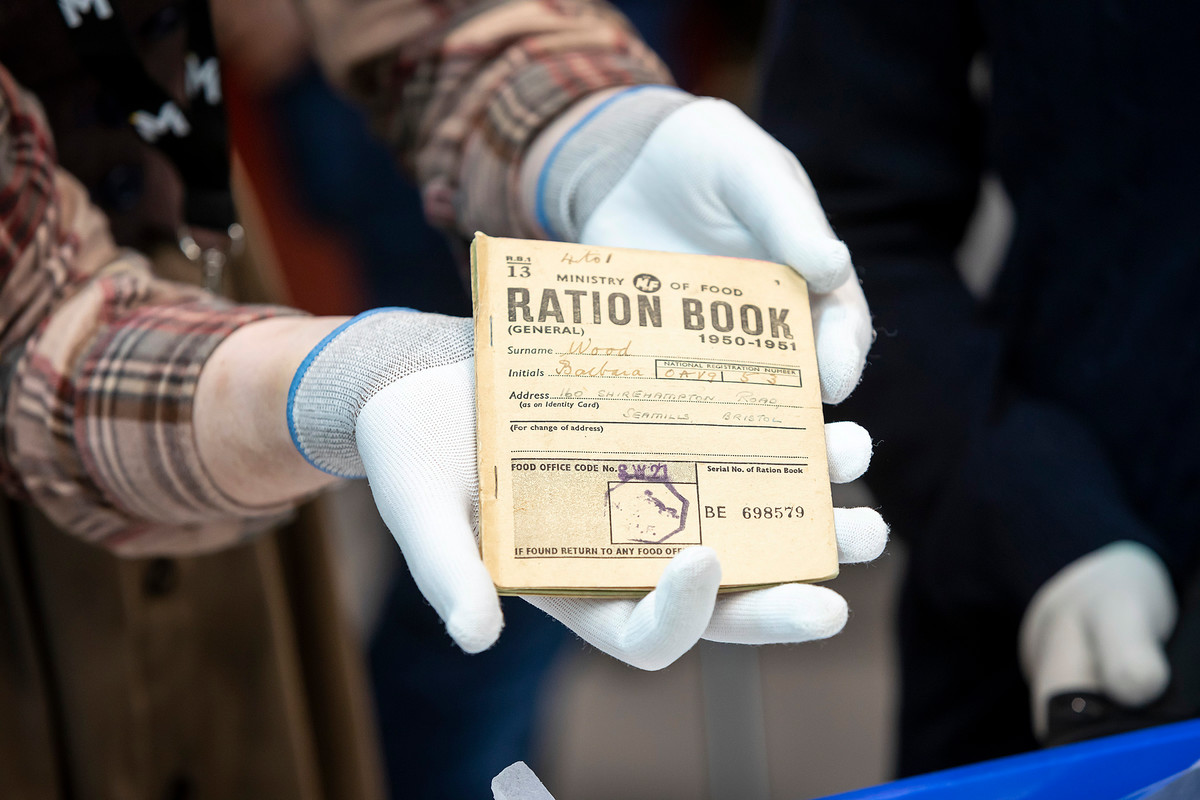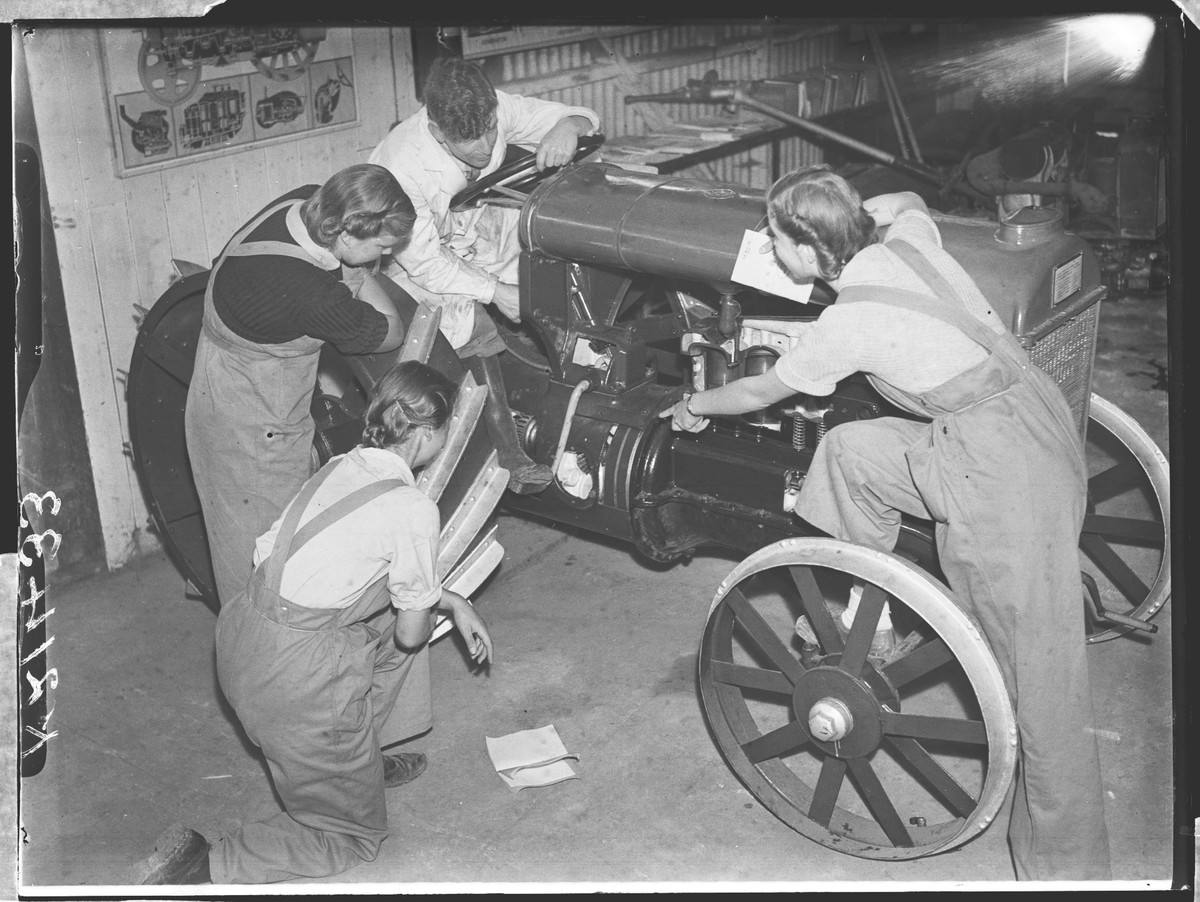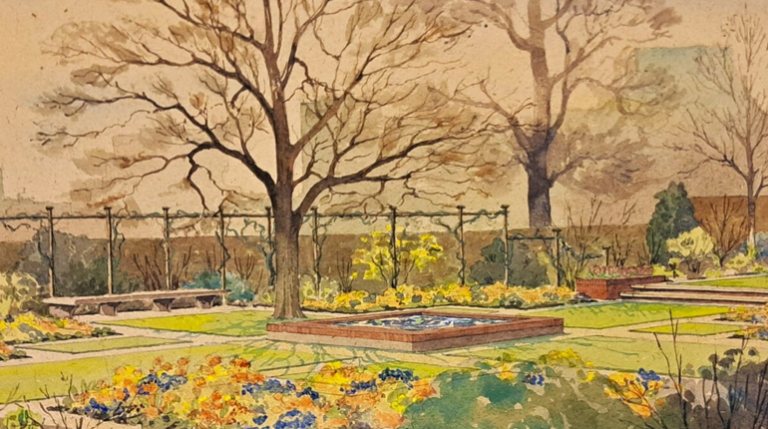How did rationing work in the Second World War?
From 'grow your own' to 'dig for victory', learn about the history of rationing in wartime Britain.
-
Author
-
Published Date
- May 8, 2022

Few items symbolise life on the home front during the Second World War more than ration books. Rationing impacted people of all ages across British life. It changed the food we ate, how we travelled, and even how we dressed.
Below, explore the history and impact of wartime rationing in Britain, through the collections of The Museum of English Rural Life. Learn how rationing worked, the different types of rationing, and how British farming and agriculture changed in response to the impact of the Second World War.
The need for rationing
At the start of the Second World War, there was a genuine fear that Britain would run out of food.In 1939, Britain annually imported 55 million tonnes of food from across the globe. Yet when German submarines began to target supply ships and sabotage trade routes, people panicked. Low food supplies could lead to food hoarding, soaring prices, and the risk of starvation.
What would happen if Britain lost access to 55 million tonnes of food? How would people respond? Could they survive on British-grown produce alone?
A diet for saving Britain
The threat of a national food crisis led to the beginning of a top-secret research project by three scientists at the University of Cambridge: Elsie Widdowson, Robert McCance, and Frank Engledow.The Cambridge researchers aimed to test a diet of British produce that could be sustainable on a national scale and be healthy for each individual. Critically, the diet needed to be highly nutritious to meet the energy requirements of demanding wartime labour, whether on the farm or the factory floor.
The researchers took six volunteers to Yorkshire and tasked them with completing a range of physically-demanding exercises (including hiking, cycling, and mountain climbing) on a strictly rationed diet. The Peak District and the Yorkshire Dales provided the perfect testing ground.
The experiment was a remarkable success. The volunteers reported they felt full of energy as they completed the tasks, with no detriment to their overall health. They only reported one side effect: an increase in flatulence!
The researchers shared their findings with the British Government, who kept the results secret until the end of the war. The Government’s rationing was more relaxed than the experiment had been, but it was a relief to learn that the British people could still be fighting fit regardless of the availability of imported food.

Opening the ration book
In January 1940, every man, woman and child was issued with a government-supplied ration book. These rations books contained coupons, which people could exchange for certain amounts of produce from different shops. Shoppers received 16 coupons per month to spend on any food items they wished. These could be traded and spent as follows:- Rice: 8 coupons
- Sardines: 2 coupons
- Sultanas: 8 coupons
- Skimmed milk: 5 coupons
- Currants: 16 coupons
- Baked beans: 2 coupons
- Biscuits (dry): 2 coupons
- Biscuits (sweet): 4 coupons
- Herrings: 2 coupons
- Sultanas: 8 coupons
- Stewed steak: 20 coupons
- Rolled oats: 2 coupons
- Sausage-meat: 12 coupons
- Best Red Salmon: 32 coupons per small tin
At the same time, each person was assigned a registered butcher and greengrocer, which meant that shopkeepers were able to anticipate the amounts of food they needed to supply each week, minimising waste.
The different kinds of ration books
For food rations, brown ration books were the most common type, as they were used by most adults. Pregnant women, nursing mothers and children under five received green ration books, whilst blue ration books were issued to children between five and sixteen years old.However, it wasn’t just food that was rationed in the Second World War. Materials and resources across day-to-day life were restricted to avoid shortages and accommodate the military’s needs.
Small green books were used for petrol rations. To qualify for petrol rations, applicants had to produce their car or motorcycle registration. The coupons were only valid for the period in which they were issued, so they could not be saved or hoarded. One coupon equated to one gallon of petrol.
Bright red ration books were for clothing rations. Clothes rationing came into effect from 1 July 1941, as textiles were preserved for the military. Only 24 coupons were issued every six months, with up to 100% purchase tax, meaning that you might end up paying double the price of a coat or dress. Children were permitted an extra ten coupons to accommodate for growing, but mothers were encouraged to plan ahead and buy clothes that kids could ‘grow into’.

The impact of the war on farming
Agriculture experienced a radical change during the Second World War. For many farmers, the focus became production. Even animal food was rationed to ensure that animals produced the best quality meat, milk, or eggs without being overfed.Farmers were required to seek permission to slaughter animals to feed their families, as everything was on the ration. One rule, however, was that should an animal be injured, it could be slaughtered to reduce its suffering. According to one testimony, ‘many sheep and pigs during the war “fell down holes” and injured themselves. Especially round people’s birthdays!’
As men enlisted in the Armed Forces in huge numbers, the Women’s Land Army saw women heading into the countryside to sustain the country’s food production. For many women, it was their first venture into rural England and offered both adventure and the chance to learn new skills.
You can learn more about the Women’s Land Army across our website, including Land Girls and Breaking the Colour Bar.

Widening the divide of town and country
Rationing highlighted a divide between countryside and urban people. Those with more land available to them could keep chickens and other small animals that would provide them with extra food on top of their allotted rations. Elsewhere, in towns and cities, those living in built-up environments had much less opportunity afforded to them.On a personal note, my grandmother was born in Bethnal Green in 1932 and was only seven when the war broke out. She recalled that her family had little money and often could not afford their allotted rations, debunking the myth that rations ensured food for all.
She was later evacuated to Stoke-on-Trent, with her siblings and mother, and she was often put to work on a farm. It was the first time she had ever seen a cow and she loved green open spaces, of a kind she had never experienced before. The farmer allowed her family extra eggs and milk where possible, which dramatically improved their diets, although still not to the level they would have wished for.
The end of rationing
Rationing remained in effect until the early 1950s. Meat was the last item to be derationed and rationing ended completely in 1954, nine years after the war ended. The UK was the last country involved in the war to stop rationing food.One suggested reason for the continuation of rationing was a withdrawal of financial support from America, which meant Britain still could not afford to import the same amounts of food that it had done before the war.
Another reason is that many felt spare food would be better directed to people across Europe who were in dire need of help. Holland, Belgium, Germany, and Denmark had all been reduced to starvation during the war and millions of people had been displaced or lost their homes entirely. Whilst imports of meat, butter and cheese from New Zealand and Australia, and fresh dairy produce from Ireland, eased some of the burden on UK diets, it was felt that the people of Europe needed it more.
To mark De-Rationing Day, members of the London Housewives’ Association held a special ceremony in London’s Trafalgar Square. Minister of Fuel and Power, Geoffrey Lloyd, burned a large replica of a ration book at an open meeting in his constituency.
Interested in learning more about rationing and wartime farming? Find out more about our Evacuee Archive or our Women’s Land Army Collection. Alternatively, come and see the collection in person by planning your free visit to The Museum of English Rural Life.





